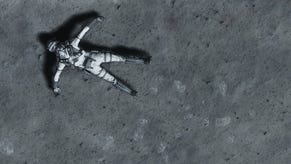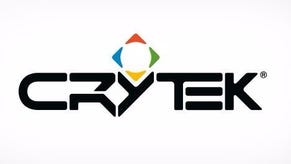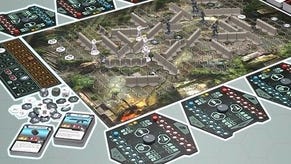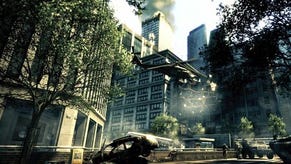Face-Off: Crysis 2
Suit to kill.
Actual implementations of stereoscopic reprojection has been limited thus far - we've got SOCOM 4 coming up which uses it, and in the here and now there's the Pigsy's Perfect 10 DLC for Enslaved, utilising TriOviz reprojection in its first full 3DTV outing (more on that in an upcoming Digital Foundry article). There's a performance hit on PS3 there, but the 360 version is remarkably solid, adding some weight to Crytek's claims.
With both Xbox 360 and PS3 Crysis 2 SKUs now available for analysis, we can put this to the test. 3D performance on key titles has been compromised in one way or another - has Crytek got the solution in CryEngine 3? First up, let's see how things look on the HDMI 1.4 equipped PlayStation 3.
Full resolution 3D over HDMI 1.4, with only the tiniest performance hit - Crytek has done it. However, controversy seems to surround what it is that the developer has actually achieved here - is it really an authentic stereoscopic technique? Follow-up analysis of the Xbox 360 multiplayer demo suggested that Crytek had simply sectioned off the image into HUD, view weapon and world layers and introduced pixel separation to give each element its own level of depth. In short, there was no real 3D here.
The developer responded by saying that there would be "more depth" in the final game, but what we were really looking for would be discrete camera separation - a truly unique view for each eye. In fairness to Crytek, things have changed in the final game. For starters, the horrible screen-tear in the 360's 3D mode has completely gone. However, the basic premise of Crytek's 3D approach - three distinct 2D layers - still seems to be in effect, though it has been tweaked a bit.
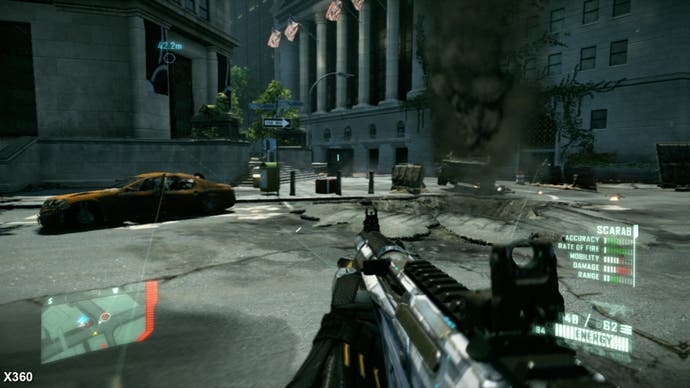

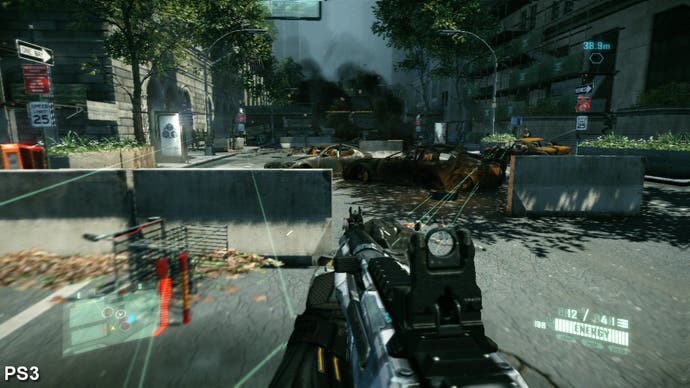
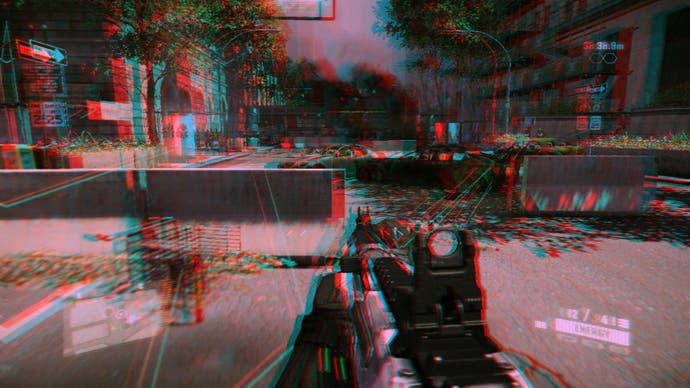
There has been some attempt at giving a bit more parallax to the world layer. It seems that elements near to the camera are further shifted compared to objects further away, but the effect is very subtle. In short, Crysis 2 in 3D is no Motorstorm: Apocalypse or Killzone 3, but it is an interesting alternative technique that may exhibit better results in a game where aspects of the image are split into distinct layers, such as LittleBigPlanet. Certainly though, the performance Crytek promised is there, and on both platforms to boot. Here we re-run the same 3D test as before, but this time using the Xbox 360 version of the game. HDMI 1.4 isn't supported on the 360 of course, so Crytek's approach is to rescale the image into the side-by-side configuration and ask the user to switch his 360 dashboard to 1080p mode. This does result in rectangular pixels, however, so the game loses some of its visual fidelity compared to the 2D mode - and indeed the 3D mode on the PS3 version.
Bearing in mind the limited nature of the 3D support, it doesn't really factor into the purchasing decision – but the PS3 undoubtedly gives the better picture here.
It's difficult to give any really strong recommendation about which version of Crysis 2 to buy if you're in the enviable position of being able to choose between both HD console platforms. The good news is that taken as a whole, they are both really impressive games, for the most part. Amusingly, the very first Achievement/Trophy to be invoked after the graphically challenging opening sequence is called "Can It Run Crysis?" - a tip of the hat to a question that has dominated PC buying decisions over the last few years, and maybe even a rebuttal to our own Can Consoles Run Crysis? article we ran a while back. There's little doubt that CryEngine 3 is a serious contender on PS3 and 360, delivering something approaching a full-fat Crysis experience, but it does have issues. The thing is, they are not exclusive to any particular platform.
There's little doubt that the Xbox 360 is the cleaner, crisper experience and for the most part it commands a small but significant frame-rate advantage and fewer little glitches; especially outside of combat scenarios, the game just seems to run that much more smoothly. However, there are parts of the game that seem to be brutally unoptimised, bringing the performance level crashing down to the point where the afflicted sections become almost unplayable - a variable 15-20FPS update in an intense fire-fight is hugely disorientating, and this makes Crysis 2 one of the most inconsistent performers released in recent times.
In these situations, it seems that it is the Xbox 360 version that has the most difficulties, though there's no mistaking that both platforms seem to lag badly in much the same areas. Interestingly, the really poor-performing sections do seem isolated to specific areas in the campaign, and from the hive infiltration level onwards things seemed to improve, but it's quite difficult to believe that those areas of the game got through QA without someone, somewhere raising the red flag.
The key to progression through these troublesome areas is to employ stealth rather than a balls-out frontal assault, but in a game that places so much weight on presenting different tactical strategies for potential flashpoints, it's disappointing that it's technical issues that are effectively narrowing down the available options. In conclusion, it's fair to say that Crytek has done enough to prove that Crysis can run on consoles - either of them in fact - and certainly the issues the game has in terms of bizarre glitches, performance drops, geometry pop-in and such-like are hardly exclusive to one platform. On balance, 360 has the edge in terms of visuals and general performance, but PS3 more than holds its own, bettering the Microsoft platform in some areas.
The crucial thing is that both are phenomenally attractive games, producing effects quite different and in many ways more advanced than anything we've seen elsewhere on console. We all wanted Crysis on console to be an event, a showcase release: by and large, Crytek has delivered, and those cutting edge visuals are backed by a truly impressive game design. However, there's the nagging feeling that a few more months in development could perhaps have ironed out the issues both versions of the game have.
The question now is whether the PC version of the game manages to power past these problems, and thus provide the ultimate Crysis 2 experience - that's something we'll be looking at in this Saturday's regular Digital Foundry feature.


